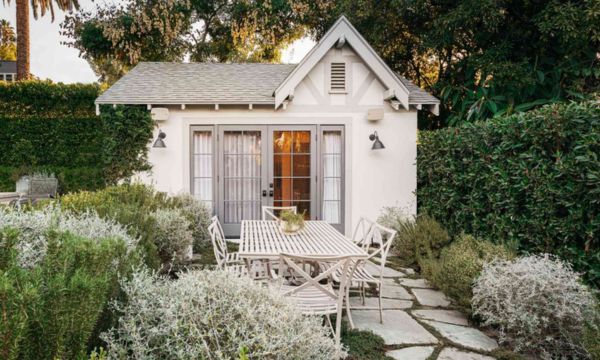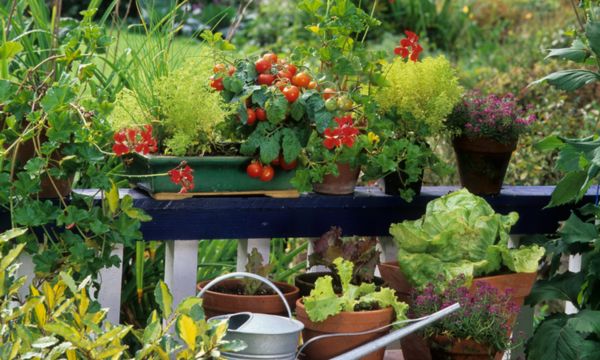Growing Herbs in Tiny Spaces: Flavorful Delights for Tiny House Gardeners
You don’t have to give up life’s simple luxuries to move into a smaller space, such as a tiny house. One of the joys is growing your own herbs, which not only add flavor to your food and keep it fresh longer, but also make your limited living space comfortable. In this article, we’ll discuss tips for growing herbs in small spaces, and ways in which it can be a satisfying and rewarding experience for those of you who garden in small homes.
1. The many Advantages of Growing Herbs in a Small Area
Taste and Freshness:
For a chef, there is nothing quite like having easy access to fresh herbs at all times. Growing your own herbs can help ensure that the dishes you create have a rich, full-bodied flavor that cannot be replicated with store-bought herbs.
Efficient Use of Space:
Growing herbs in compact pots or vertical gardens is an effective way to make the most of limited space, an important consideration for people living in small homes. The little fans in your life can benefit from this solution, both practically and aesthetically.
Cost Efficiency:
If you only need a limited amount, buying fresh herbs from the store can be expensive because they come in larger packages. Growing your own herbs allows you to harvest what you need, save money and reduce food waste.
Sustainable Living:
Living in a small space is often accompanied by more environmentally conscious behaviour. Growing herbs at home has a positive impact on sustainability, as it reduces the environmental footprint associated with the production and transportation of herbs for commercial use.
2. How to Choose the Right Herbs for Your Small Garden
The Fundamentals of Good Cooking:
First, prepare some basic ingredients for cooking, such as basil, thyme, rosemary, and parsley. These adaptable herbs don’t require much effort to grow and can be used in a variety of food preparations.
Species that Take Up Less Space:
Choose compact herbs like chives, mint and cilantro that can grow in small containers or even indoors. Leek is a good example.
Tea made from Herbs and Medicinal Plants:
Consider growing herbs such as chamomile, lavender and lemon balm to prepare soothing herbal teas or to study the medicinal properties of these plants.
3. Getting Your Small Herb Garden Ready to Grow
Choose the Right Container:
Choose containers that work well in small spaces. Wall planters, windowsill planters, and hanging baskets are all great options.
Both Soil and Fertilizer:
Use well-draining soil and an organic fertilizer designed for container gardening to ensure your herbs get all the nutrients they need.
Lots of Exposure to the Sun and Moisture:
Most herbs benefit from sun exposure. Therefore, place your herb garden near a sunny window or use artificial grow lights. Pay attention to how much water they need to keep herbs healthy.
4. Small-Scale Herb Cultivation and Maintenance
Sow or Transplant:
You can start your herb garden by planting seeds, or you can purchase seedlings from a local nursery. Carefully transfer them to the designated containers.
Advice on Pruning and Harvesting Fruit:
The practice of pruning encourages more luxuriant growth, while continuous harvesting encourages the maintenance of continuous production. Acquire the skills needed to use each herb.
Control Pests using Natural Methods:
Harmful pests can be effectively controlled using natural methods such as neem oil, diatomaceous earth and the introduction of beneficial insects such as ladybugs.
5. Clever Concepts for Small Herb Gardens
Vertically Planted Herb Garden:
Repurposed materials such as wood pallets can be used to create beautiful herb walls or hanging gardens that take advantage of the vertical space.
Garden on the Windowsill:
The simple act of placing small pots of herbs on the windowsills of your home can turn them into a green paradise.
Hanging Spice Basket:
Add charm and aroma to your tiny home by hanging a pretty basket full of herbs in your kitchen or living room.
6. DIY Spice Preservation
Dried Herbs:
Dry the excess herbs for year-round use in cooking and herbal remedies.
Making Herbal Oil:
Infuse your favorite herbal extracts in oils to improve your culinary skills and self-care habits.
Frozen Herbs:
Freeze herbs in ice cube trays or freezer bags to keep herbs fresh.
Delicious Dishes: Cooking with herbs from our own soil.
Enhance Culinary Creativity:
Experiment with different spice combinations to create special flavors for your dishes.
Herbal Oil and Vinegar:
Make flavored oils and vinegars to add depth and character to your cooking.
Herbal Cocktails and Mocktails:
Use herbs to make a refreshing drink that is both delicious and healthy.
7. Healthy Small Herb Garden
Herbal Remedies for Stress:
Plant lavender, chamomile, and lemon verbena for their calming and stress-reducing properties.
Aromatherapy at Home:
Harness the power of aromatherapy with essential oils extracted from herbs.
Herbal Remedies for Common Ailments:
Plant herbs such as aloe vera and peppermint, which are known for their healing properties for ailments.
8. Challenges and Solutions for Small Herb Gardeners
limited Space and Planting Options:
Make the most of the space and choose herbs that are suitable for the conditions in your small garden.
Climate and Environmental Considerations:
Adapt your gardening practices to the climate in your area to ensure that your herbs thrive.
Manage Space Burst:
Balance the arrangement of spices and containers to create a space that is both beautiful and functional.
Conclusion
Growing herbs in a small space can be an enjoyable and rewarding journey for the small home grower. Green, flavors and natural remedies at your fingertips. By growing these little plants, you will not only elevate your culinary experience, but also create an oasis of harmony in your tiny home.
FAQs:
1. Can herbs be grown indoors in a small space with no sunlight?
While some herbs can tolerate low light, most thrive in direct sunlight. If you have limited sunlight, consider using artificial grow lights to supplement natural light.
2. What are some good space saving containers for small herb gardens?
Options such as vertical planters, wall-mounted planters, and tiered shelves are great options for maximizing space while also housing multiple herb varieties.
3. How often should I water my small herb plants?
The frequency of watering depends on the specific herb and its individual needs. In general, water when the top inch of soil is dry, but avoid overwatering as this can cause root rot.
4. Can I grow herbs with kitchen scraps in a small space?
Yes, you can replant some herbs like scallions, basil, and mint from kitchen scraps. Place the cuttings in water until they take root and then plant them in soil.
5. Which herbs are best for beginners in small home gardening?
Basil, mint, chives and parsley are some of the easiest herbs for beginners to grow. They are relatively low maintenance and relatively forgiving to novice gardeners.
Ad Nowadays our smartphones have become a powerful tool, unlike in the past when they were very […]
More Thriving in Adversity: Tiny House Gardening in Challenging Climates
Thriving in Adversity: Tiny House Gardening in Challenging Climates
Ad Creating life and beauty through tiny home gardening, even in the harshest environments, is a monument […]
More Small Space, Big Harvest: The Joy of Tiny House Vegetable Gardening
Small Space, Big Harvest: The Joy of Tiny House Vegetable Gardening
Ad You don’t have to give up the fun of growing your own veggies just because you’re […]
More